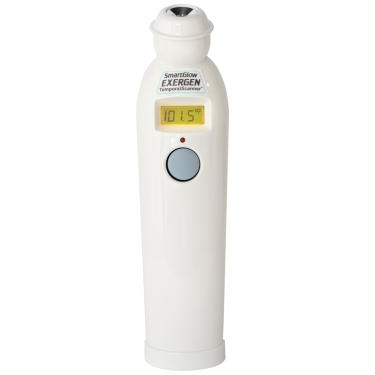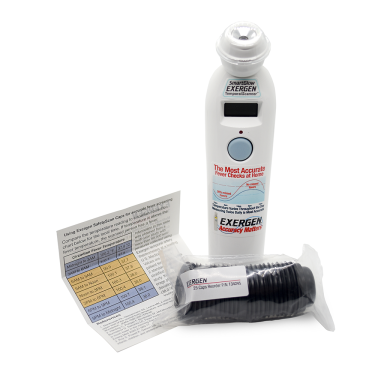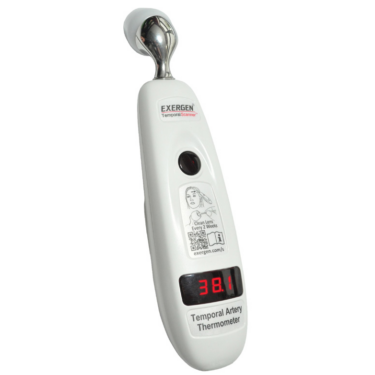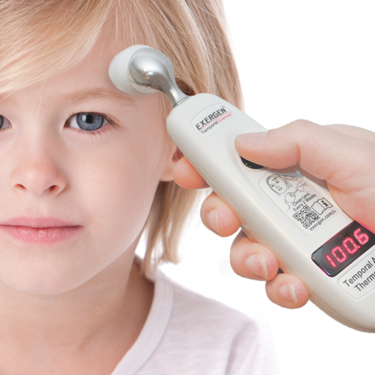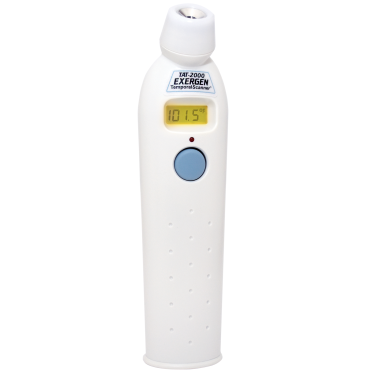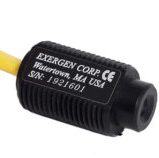The Story of Alice’s Quest for Emissivity
“It’s all done with mirrors!’’
“What do I see when I look in my mirror?” asked Alice. “I see myself, of course.”
“But what about the mirror why can’t I see the mirror itself” she pondered. “Maybe it’s because the mirror is invisible? Na, if it were, I would be able to see the wall behind it.” Just then she had an idea, “I know, if I put spots of crayon on the mirror, then I can see the mirror!”
She put spots of crayon on the mirror and sure enough, she could see the mirror, wherever she put the spots! “The crayon spots are now part of the mirror, and I can see them!”
“Hmm . . .” she thought. “I still can’t see the whole mirror. All I can see is the part covered by the spots. In between, I still see my face, not the mirror.”
A magical white rabbit who had been watching Alice appeared and said, “Why, my dear girl, you are almost there! A little further and you will understand the concept of EMISSIVITY!”
“Emissivity?” queried Alice. “What is that?”
The rabbit, being patient as well as an expert on matters of light and heat, continued: “Alice, what do you see in your mirror?”
Alice replied, “Why. . . I see the mirror where crayon spots are, and my reflection where they are not.”
“Of course.” replied the rabbit. “You can see the visible part of the mirror, as crayon, but the rest, let’s call it ‘not-mirror: you cannot see because it REFLECTS.
“Does this mean that light bounces off the not-mirror part?” asked Alice.
“Why yes, of course, you are beginning to see it!” cried the rabbit. “What about the crayon marks? Does light bounce off them?”
“No!” said Alice. “I can see those for what they really are: the mirror itself and not my face.”
“Splendid!” cried the rabbit. “Now, what if we counted up all your dots and added them together to see how much of the mirror they cover. Let’s suppose that they added up to 10% of the mirror. What does that mean?”
“Hmmm . . .” said Alice, being thankful she always did her arithmetic homework. “That means that I can see 10% of the mirror!”
“And.. ,” encouraged the rabbit.
“And that 90% is left for me to see my reflection?” cried Alice.
“Absolutely correct,” stated the rabbit in his most authoritative voice. “Now you see a great principle— when you look at a surface, the sum of the amount you can see, and not-see is 100%.”
“And.. ,” giggled Alice, anticipating his next statement. (You see, Alice is a very bright girl.)
“And.. ,” said the rabbit. “The part that you cannot see is replaced by a REFLECTION. What you see is not the object itself. The missing not-seen part is replaced by a reflection which can be seen! You see, Alice, nature insists that when you not-see something, you must see something else!”
“Wow!” thought Alice. “I wonder how Mother Nature knows when to do all this. She then asked. “What happens if I use more crayon and cover 90% of the mirror?”
“Why then, how much is left to reflect?” continued the rabbit.
“Of course,” answered Alice, “only 10%.”
‘Nature insists on the total of the mirror and not-mirror adding up to 100%,” explained the rabbit.
Suddenly, another thought struck Alice. “What if I wished to see all of the mirrors? Would I then have to cover the whole thing with my crayon?”
“That’s one way,” said the rabbit as if he read her thoughts. “But there is a better way, especially if you do not wish to disturb the mirror.” Alice was puzzled, reasoning that to see 100% mirror, she would have to see 0% not-mirror, and not be able to see herself at all!
“It’s all done with mirrors!” exclaimed the rabbit with a twinkle in his eye. He then produced a hollow, shiny, metal beach ball (proving white rabbits are not only smart, but magical) which he proceeded to divide in half and put a small hole in the center of one of them.
“Why, it’s a round mirror!” cried Alice as she peered inside it. “Right.” said the rabbit as he placed it over the mirror with the crayon spots covering 10%. “Now look inside this hole, Alice, and tell me what you see.”
Alice carefully peered into the hole and gasped at what she saw. “I see all 100% as a crayon!” she cried.
Not believing her eyes. She quickly removed the beach-ball half and looked at the mirror. It was the same as it was before! Ninety percent was reflecting the light from her face, while 10% was covered with crayon dots. Carefully replacing the beach-ball-half on the mirror and looking inside again, she insisted, “You must be using your magic to do this.”
“No,” said the rabbit softly. ‘“It is the nature of things which makes you see 100% mirror now when there is only 10% of the mirror visible without the beach-ball-half.”
“The 90% of the mirror which is reflecting is continuing to reflect. However, the light which it reflects has as its source only the crayon dots. The light from the crayon dots is reflected by the beach-ball-half BACK to the mirror. If the light happens to hit a reflecting part, it reflects BACK to the beach ball again, and back to the surface. Eventually, the light hits a crayon dot. Then it is absorbed and does not reflect.
“When you look inside the hole, you see the result of zillions of reflections and absorptions of light. The entire reflecting part of the mirror is covered, not by the crayon dots themselves, but by the REFLECTIONS OF THE CRAYON DOTS!
“And that is why, my dear Alice, you see 100% of the crayon/mirror and 0% of anything else. For when we reach 100% of something, we can have 0% of not-something.” concluded the rabbit.
After a long pause, Alice asked, “What does all this have to do with EMISSIVITY? You said I was well on my way to understanding it.”
“Well’ said the rabbit. “Light energy and heat energy are identical. Both follow the very same rules. The difference is that heat energy, sometimes called INFRARED, cannot always be seen by your eyes. You can sometimes feel it, such as when you place your hand near a hot stove. Most of the time a sensitive instrument, such as a MICROSCANNER™, is required.
“All materials, like your mirror with crayon dots, will partly reflect and partly emit its own heat radiation. The part which is emitted because of its own heat is called EMISSIVITY. The part which is reflected from other objects nearby is called REFLECTIVITY.
“Just like your mirror with the dots, nature insists that the sum of EMISSIVITY and REFLECTIVITY is 100%. If a surface has an emissivity of .8, that means it emits heat energy as if 80% of its surface were emitting at 100%. The remaining .2 reflectivity means that heat energy is reflected by 20% of the surface reflecting at 100%.
“So you see Alice, emissivity is not so mysterious. It is just the part of the surface that you can see, concluded the rabbit.
“I understand!” said Alice, “but what about the beach-ball-half with the shiny inside? How does that work in infrared?”
“Why that’s a very, very good question, Alice.” replied the rabbit, and he proceeded to explain.
“One of the purposes of using infrared is to measure the temperature of surfaces—much, much more quickly than can be done by other methods. However, there was a nagging problem of EMISSIVITY.
“The engineers at Exergen were gravely concerned with this problem because their customers could not always know what the exact value of the emissivity is on any particular surface.
“You see, Alice if a sensitive instrument is ‘looking’ at a surface, it sees, like your eyes do, a combination of emitted and reflected heat radiation. Unless you know how many ‘crayon dots’ there are and what the reflections are, then you cannot know the temperature of the surface.
“What you really want to know, to get temperature, is the average heat emitted by the ‘crayon dots: since they are really the surface. The reflective portion only tells you that the surface reflects—not what the surface is.
“Therefore, the Exergen engineers, in designing the MICROSCANNER D-SERIES, had a bright idea-use a shiny beach-ball-half! They called it the Automatic Emissivity Compensation System (AECS), a rather complicated name. Most people just call it a ‘reflective cup’.
“You see, Alice, the shiny, reflective cup on the D-series does the same thing that you saw in your mirror. Instead of your eyes, a sensitive detector is used to look into the hole.
“The heat emitted by the ‘crayon dots’ reflect and re-reflect until 100% of the surface is covered with the dots. Then the heat detector sees 100% dots and 0% not-dots. Therefore, EMISSIVITY IS ONE.
“With the emissivity at 1.0, Alice, an exact temperature may be calculated by the electronic circuits in the MICROSCANNER D-SERIES.” concluded the rabbit.
“Well, how about that!” said Alice. Now I understand emissivity, and also how to deal with it! If anyone ever asks how the MICROSCANNER D-SERIES works its magic, now I can tell them:
“IT’S ALL DONE WITH MIRRORS!”
